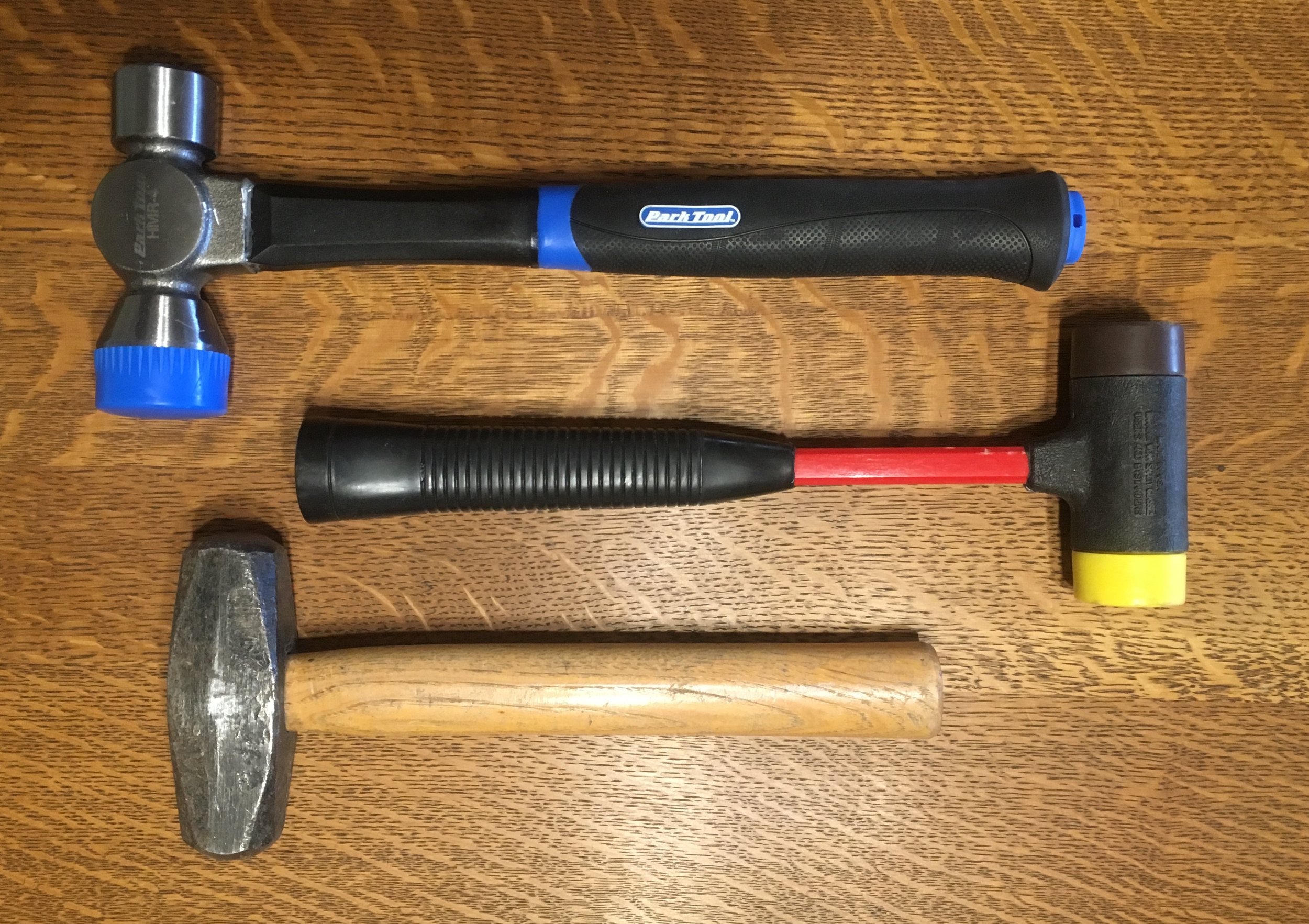Lately I’ve been trying to expand my dedicated set of bicycle tools, largely the iconic blue-handled items from Park, which I described last time as the Snap-on on of bike tool makers. Honestly, besides the specialty bits—bottom bracket tools, brake compressors, head-tube reamers, and the like—there really is no particular “bikeness” about Park’s hex keys, wrenches, pliers, and screwdrivers. But they’re inarguably of high quality, fairly priced, and, well, the pegboard just looks sharp with color-coordinated tools, and it makes me feel like I’m a better bicycle mechanic than I really am, and perhaps if you feel like a better mechanic you’ll actually be one.
Or whatever rationalization you like . . .
In any case, recently I decided it would be nice to have a dedicated hammer for bicycle work, for when certain things just need a tap or two either to get where they’re supposed to be or to be removed (the cottered cranks on Roseann’s vintage Raleigh come to mind). So I ordered a Park hammer with one hard face and one (replaceable) plastic face.
I was expecting a 3/4-scale tool suitable for not endangering expensive Campagnolo parts or brittle carbon fiber; instead I got a full-sized brute of a thing that weighs 2.1 pounds.
Hmm . . . that got me thinking, and I pulled out the One Case Tool Kit (full-size version). In it I currently have two hammers—a sledge for rough work and a Craftsman plastic-faced product with one soft and one harder face. The sledge weighs 2.4 pounds, the plastic hammer just under a pound. Honestly, the plastic hammer has proved too light. Even as something designed to be gentle on parts it lacks sufficient mass and kinetic energy to be effective. Comparing the new Park hammer, it is not that much lighter than the sledge for rough beating, yet usefully twice the weight of the Craftsman plastic hammer. And by replacing both previous hammers I actually save almost a pound and a half.
So, er, now I need to buy another bicycle hammer . . .


